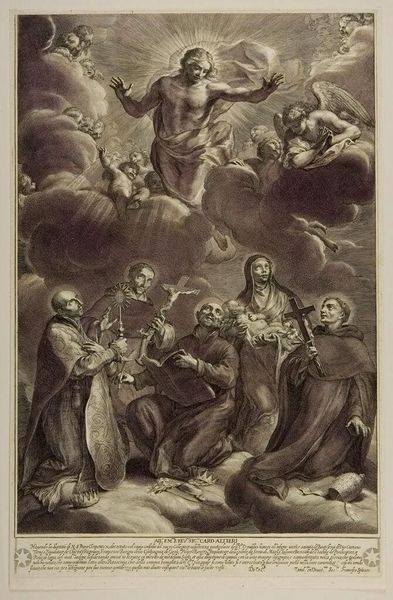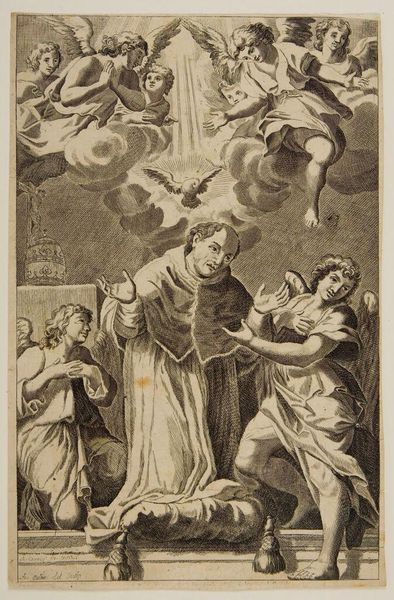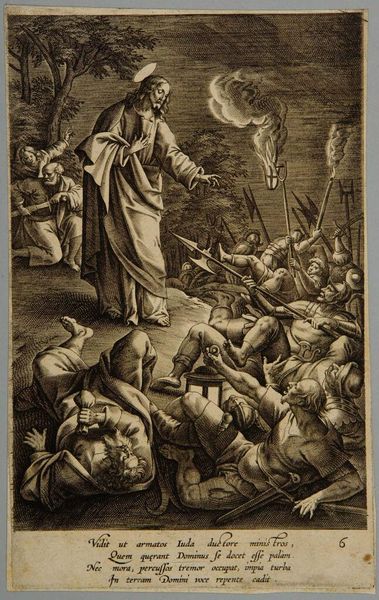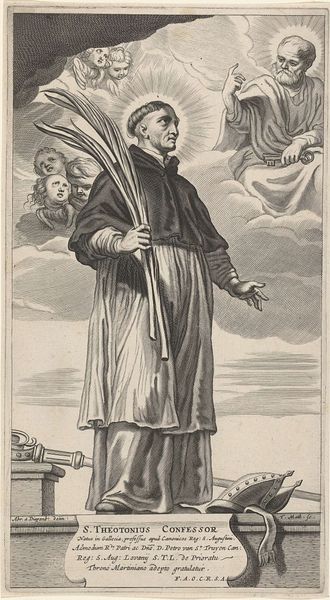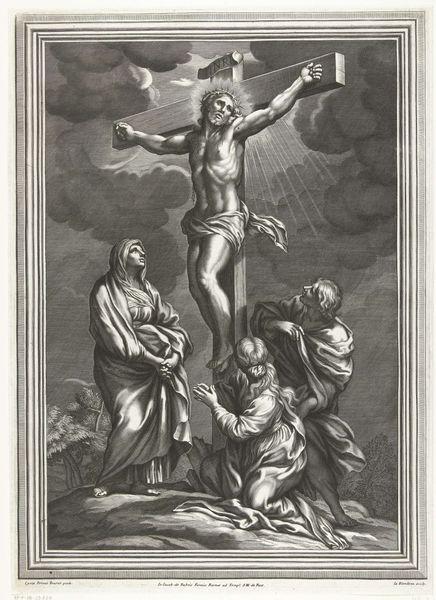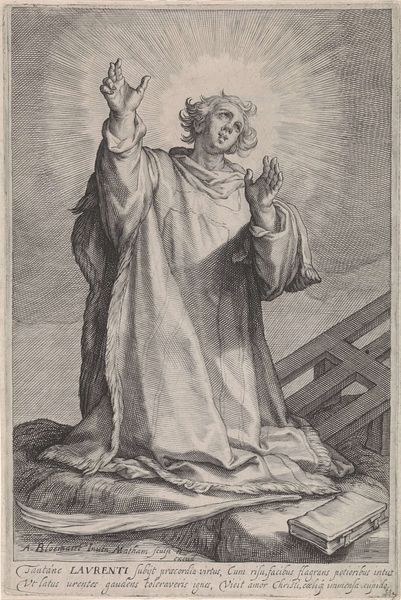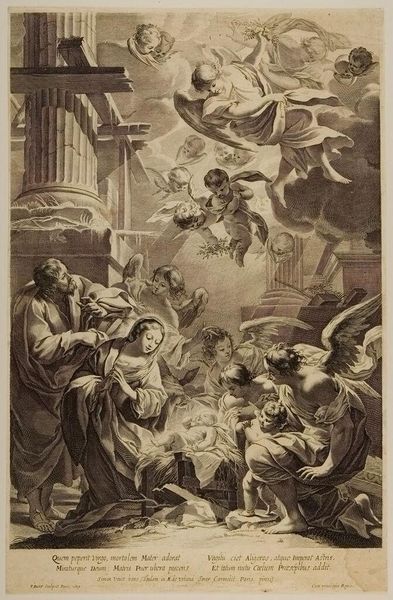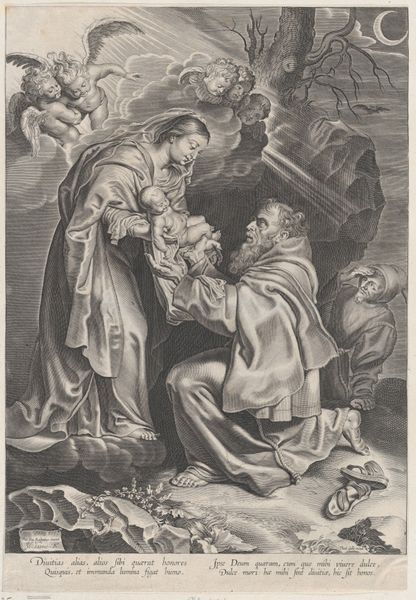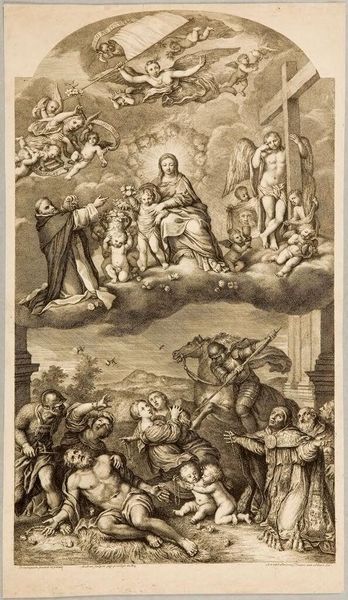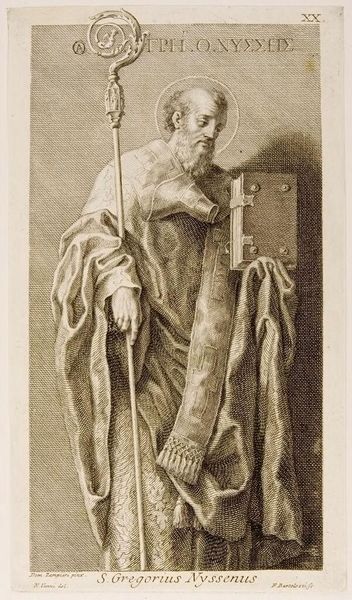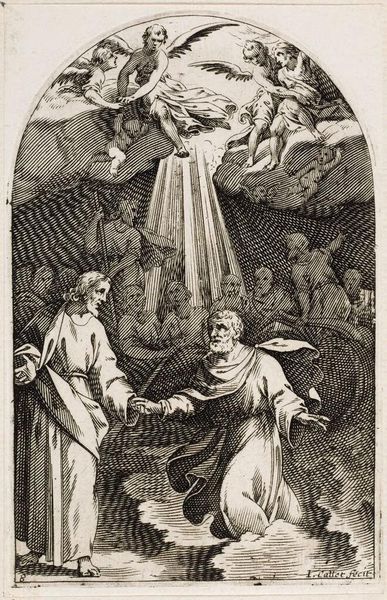
Copyright: CC0 1.0
Editor: Here we have Robert van Auden-Aerd's "Saint Philippus Nerius." It's quite striking, with its heavy use of light and shadow. What do you see in the way it's composed? Curator: The interplay between light and shadow indeed defines the composition. Observe how the artist uses chiaroscuro to create a dramatic effect, drawing our eyes towards the saint's illuminated face amidst the surrounding darkness. This strategic use of light not only sculpts the forms but also imbues the scene with a sense of ethereal transcendence. Editor: So, it's the contrasts themselves that create the meaning? Curator: Precisely. The formal elements—the stark contrasts, the dynamic arrangement of figures, the almost tactile quality of the clouds—all contribute to the artwork's overall impact. It exemplifies how form can be, in itself, a potent carrier of content. Editor: I hadn't considered the clouds as tactile, more like symbolic. Curator: Consider how the artist's technique renders the clouds almost solid, like a stage upon which the drama unfolds. The symbolic import is certainly there, yet the physical manifestation cannot be overlooked. Editor: That's a perspective I'll be sure to remember. Thanks! Curator: Indeed. It’s rewarding to examine how formal elements shape meaning.
Comments
No comments
Be the first to comment and join the conversation on the ultimate creative platform.
